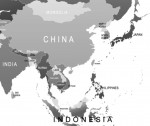Hospitals in key Asian countries are enjoying strong growth prospects, spurred by aging populations, a rising middle class, an expansion of public health insurance, and the encouragement of private and foreign investment in the healthcare sector. The growth is set to provide more opportunities for foreign manufacturers of medical devices as hospitals across the region demand more equipment and more sophisticated treatments.
This article is the first of a two-part series on the hospital sector in Asia. This piece focuses on the hospital market within China, while next month’s article will expand on other key Asian markets in India and Southeast Asia.
China’s Hospital Market
China’s hospital sector, both public and private, has expanded rapidly in recent years and is set for continued strong growth. According to the China Hospital Industry Report, 2016-2020 by Research and Markets, the total number of public hospitals in China rose to 28,584 in October 2016, an increase of 7,666 since 2010. Total revenues rose to RMB 2,708 billion ($430 billion) in 2016, up 163% since 2010.
As of 2016, private hospitals made up less than 10% of total hospital revenues in China. By April 2017, there were 16,900 private hospitals, accounting for 57% of the total. Recent reforms are expected to continue boosting the growth of private sector hospitals, leading to more opportunities for foreign investors in the healthcare sector and increasing demand for medical devices.
What is Driving Hospital Growth in China?
An aging population: China is expected to become the world’s most aged country by 2030. Already, more than 185 million residents are over the age of 60, which is about 15% of the population. This trend will increasingly boost demand for senior care services such as skilled nursing facilities, independent senior living facilities, and services that target age-related health problems like diabetes, hypertension, cancer and respiratory illness.
Easing of the One-Child policy: China is in the first stages of a baby boom as a result of the government’s recent move to relax its One-Child policy. This will lead to demand for more medical facilities, as well as equipment and services in fields such as gynecology, obstetrics and pediatrics. China currently has only 135,000 pediatricians—one for every 2,300 children. The central government has set a goal of one pediatrician per 1,450 children by 2020.
Increased government spending and reforms: The Chinese government is focused on increasing its healthcare spending in the coming years. China’s per-capita spending on healthcare stood at $367 in 2015, compared to $9,416 in the United States. That leaves a large potential for growth. The government has also announced reforms aimed at encouraging the role of private and foreign investment in healthcare to meet the increasing demands.
The Growing Role of Chinese Private Hospitals
Compared to public hospitals, private hospitals in China are generally smaller, more specialized institutions for specific medical problems. They often offer more complex surgical operations and high-quality medical services. Typically, they cater to a relatively small pool of medical tourists and expatriates, as well as more affluent Chinese. The average private hospital in China has 65 beds, compared to 280 beds in public hospitals.
Private hospitals are limited to a certain extent by the dominant role of China’s large public hospitals. The state-funded medical system tends to discourage doctors from working in multiple health facilities and is reluctant to let doctors leave after having invested much time and resources in them. Only about 4% of doctors in Beijing were seeking work in multiple clinics and hospitals in 2015, according to media reports. At least one senior doctor was reportedly fired for working at a private clinic without telling his public-sector supervisor in advance, despite following national guidelines that were relaxed in 2009.
The tendency for research and teaching facilities to be concentrated at public hospitals is another factor that keeps doctors there, despite higher pay offered by the private sector. In addition, private clinics are not allowed to advertise themselves, due to previous incidences of false and misleading campaigns run by some institutions in the past.
Despite rising wealth in China, patients are restricted in what they can pay for healthcare. The country’s insurance system is broad, covering 95% of the population, but that coverage is limited. In Shanghai, for example, patients face 30%-50% co-pays and a $240 deductible.
Despite these limitations, private hospitals are becoming increasingly integrated into the public healthcare system. Some private hospitals are now allowed to provide reimbursable treatment for patients funded through the social healthcare system. Although an estimated 85% of private hospitals are small, the number of larger private hospitals with more than 100 beds has been growing in recent years. Joint venture deals and acquisitions have driven growth in the sector.
Recent Reforms for Hospitals in China
China’s National Health and Family Planning Commission released a circular in August 2017, the country’s latest move to promote private and foreign investment in medical institutions. The circular allows the establishment of five new types of healthcare institutions: Rehabilitation centers, nursing centers, sterilization supply centers, and small or medium-sized ophthalmic hospitals. These were previously only allowed as integrated departments of large hospitals. Allowing these centers to be independent is expected to lower the barrier to entry for private investment and foreign investment in these areas.
According to the circular, approval will no longer be required to establish medical clinics within elderly care institutions. This should reduce the red tape around establishing such clinics and encourage private investment. The circular also proposed streamlining the approval process for establishing Class II and Class III hospitals, and called for a relaxation of the existing 70% cap on foreign equity ownership in medical institutions. This raises the prospect that foreign investors may eventually be allowed to operate wholly owned clinics in China.
A State Council meeting chaired by Chinese Premier Li Keqiang on October 9, 2017 made the decision to expand reforms in public hospitals. Under those plans, public hospitals across regions and different specialized hospitals will be encouraged to practice category-based pharmaceutical procurement and conduct procurement together. The mechanism for public hospital oversight will be reformed to better supervise the quality and safety of medical care, services and expenses. The meeting decided to speed up efforts to establish medical treatment partnerships, which would promote cooperation and resource sharing between medical institutions. Private medical facilities will be encouraged to join such partnerships, and more efforts will be made to expand the availability of family doctors.
The recent reforms mean there are increasing opportunities for foreign healthcare providers to invest in China. Foreign senior care operators are now allowed to set up wholly owned enterprises in China. Tax incentives, administrative fee exemptions, and special deductions and waivers—previously only offered to Chinese-owned senior care facilities—are now available to those that are foreign owned.
Tune in next month to read the next part of this series that discusses the status and prospects of other key markets in India and Southeast Asia.








